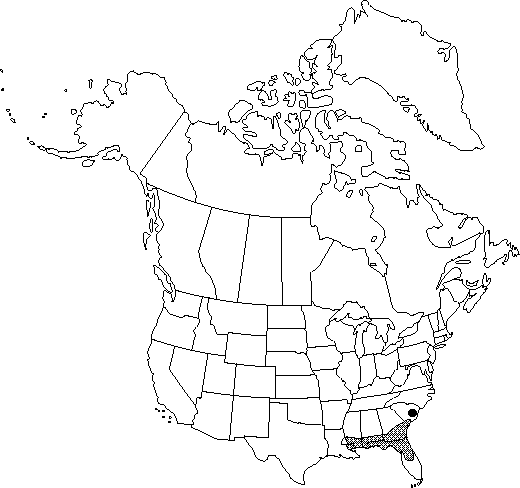Difference between revisions of "Pinus elliottii var. elliottii"
FNA>Volume Importer |
imported>Volume Importer |
||
| (5 intermediate revisions by 2 users not shown) | |||
| Line 1: | Line 1: | ||
{{Treatment/ID | {{Treatment/ID | ||
|accepted_name=Pinus elliottii var. elliottii | |accepted_name=Pinus elliottii var. elliottii | ||
| − | |accepted_authority= | + | |accepted_authority= |
|publications= | |publications= | ||
|common_names=Slash pine | |common_names=Slash pine | ||
| + | |special_status={{Treatment/ID/Special_status | ||
| + | |code=E | ||
| + | |label=Endemic | ||
| + | }} | ||
|basionyms= | |basionyms= | ||
|synonyms= | |synonyms= | ||
| Line 28: | Line 32: | ||
-->{{#Taxon: | -->{{#Taxon: | ||
name=Pinus elliottii var. elliottii | name=Pinus elliottii var. elliottii | ||
| − | + | |authority= | |
| − | |authority= | ||
|rank=variety | |rank=variety | ||
|parent rank=species | |parent rank=species | ||
| Line 41: | Line 44: | ||
|publication title= | |publication title= | ||
|publication year= | |publication year= | ||
| − | |special status= | + | |special status=Endemic |
| − | |source xml=https:// | + | |source xml=https://bitbucket.org/aafc-mbb/fna-data-curation/src/2e0870ddd59836b60bcf96646a41e87ea5a5943a/coarse_grained_fna_xml/V2/V2_810.xml |
|genus=Pinus | |genus=Pinus | ||
|species=Pinus elliottii | |species=Pinus elliottii | ||
Latest revision as of 20:25, 5 November 2020
Seedlings essentially without grass stage, height growth uniform after seed germination, buds scattered upstem. Leaves mostly in 3s, sometimes in 2s on same shoot, resin canals per leaf 3–5, hypodermis 2–3 cell-layers thick. Seed-cone base ± truncate when open. 2n =24.
Habitat: Lowland to upland forests, old fields, and fine white sands, mostly long-hydroperiod soils
Elevation: 0–150m
Distribution

Ala., Fla., Ga., La., Miss., S.C.
Discussion
Pinus elliotti var. elliottii is the fastest growing of the southern yellow pines, much planted in the United States outside its range. It is very susceptible, however, to ice damage and fusiform gall inland. This is a naval stores pine, but it is considered increasingly important in plantations as a lumber and pulpwood pine. It is much planted in subtropical and warm temperate climates worldwide, particularly in Brazil.
Selected References
None.
Lower Taxa
None.